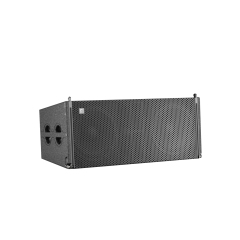You need to know your audio requirements as well as the features of an active speaker that will most suit you accordingly. The most important element when choosing an active subwoofer is its power output. 800 watts peak, 100 to 500 watts RMS powered subwoofers are common, while higher wattage might provide strong bass punch without distortion at high levels a presence. Advanced Guide to Understanding DJ Subwoofers: A sub with 200-300 watts of power should be enough for most small-to-medium sized rooms, while a model rated at least 400-watts may give you the added head-room needed in more spacious installations.
Another key spec that you should be aware of is the size of your driver. They are most common in sizes between 8 inches diameter to about 15 inches. For smaller rooms or where space is at a premium, an 8-inch subwoofer will suffice delivering tight and controlled bass. Alternatively, a subwoofer in the range of 12-inches or bigger is capable of emitting lower and booming bass output which makes it more fitting for home theaters or larger sized living areas. The decision of driver size will affect your bass to depth and power obviously so it is very important that you should choose the subwoofer according to these capabilities depending on how big or which kind of specific room area are working in.
However, the frequency response is also very important. A good active sub covers roughly the 20- to 200-Hz frequency range. Below 20 Hz, frequencies are not so much heard as felt; it is that deep rumbling effect we get when watching movies with a lot of action or listening to music. It is essential that the subwoofer can reproduce these low frequencies accurately and free of distortion in order to produce a sound quality expected from it.
One such performance of a subwoofer can have a lot to with the type of enclosure it is in—whether sealed or ported. A sealed box gives tighter and more precise bass that is perfect for a music type where the precision of your bass is most important like classical/jazz. Conversely, a ported enclosure will bet your subwoofer at producing higher output levels and less power which is great for home theater where deep strong bass sound effect are the order of the day.

The integration with current audio system is another thing that one should consider. Most new active subwoofers are equipped with their own crossover circuit and phase controls, to help integrate the subwoofer smoothly into your system by blending it well with your main speakers. Crossover Setting – Generally adjustable from 40 Hz up to around 120 Hz, the crossover setting determines when and where the subwoofer takes over for your main speakers with respect to frequency reproduction giving you a smooth transition between both providing an enhanced sound stage.
Remember that prices vary, and this is one of the biggest concerns when choosing an active subwoofer. They can run as little as a few hundred dollars for budget-level home models or soar past $1,000 for premium selections made of quality tweed and loaded with features. There is the performance needed to manage your budget A sub that is constructed well using high-quality build and design materials can essentially last for many years, you will certainly get what you paid out of a strong built subwoofer.
Brands such as SVS, Klipsch and Yamaha are some of the most popular active subwoofer manufacturers with excellent reputations. They have made a name for themselves because they always deliver products that casual listeners and audiophiles will love. The little SVS SB-1000 Pro, not only winning favor from our review team but also plaudits for music and movies alike in the comments, thanks to a 325-watt (that's big!) amplifier.
All experts acknowledge that choosing the most suitable subwoofer can drastically improve your sound listening. According to What Hi-Fi? -A good subwoofer doesn't just add bass; it adds depth and warmth of sound, transforming the auditory experience in a way that is deeper and more satisfying to listeners. So, this sums up the need of a subwoofer that goes well with your system and requirements.
To choose an active subwoofer in this scenario, take into account the power output of the amplifier, driver size, frequency response and type of enclosure so you select a model that is capable to offer good sound for its space. If you are building a home theater or looking to improve your audio system, the correct subwoofers can greatly help.